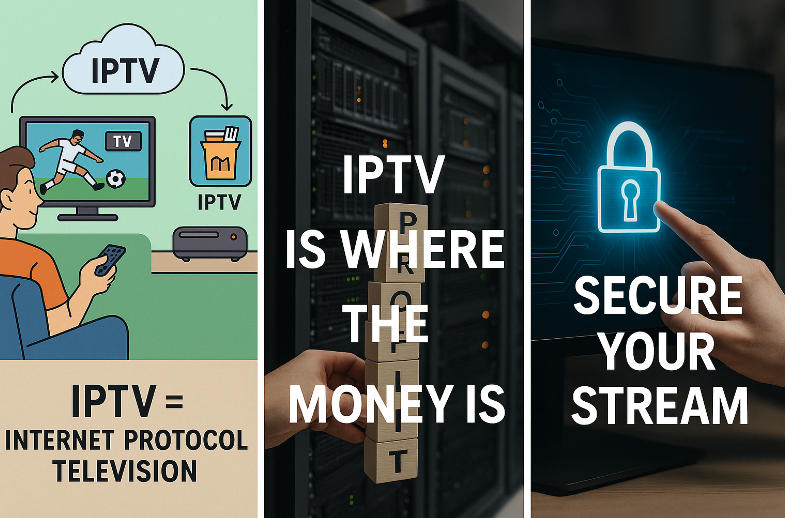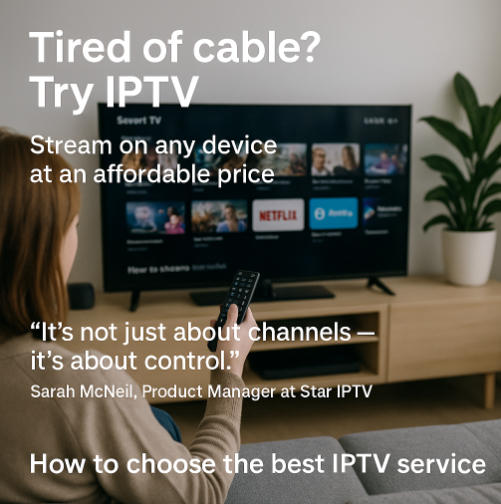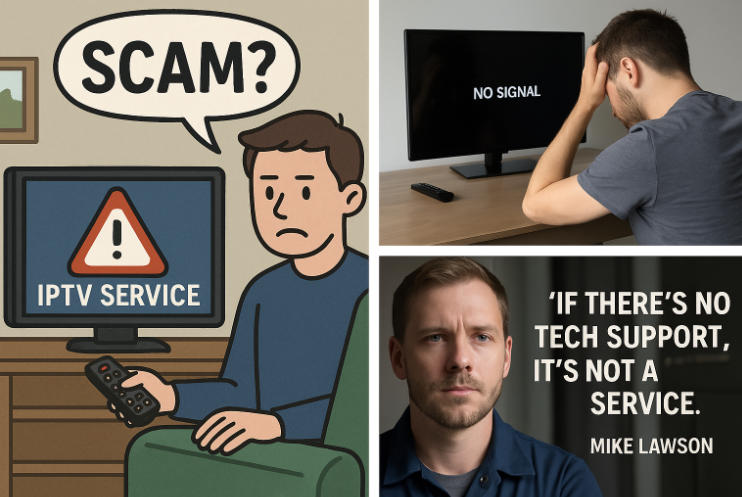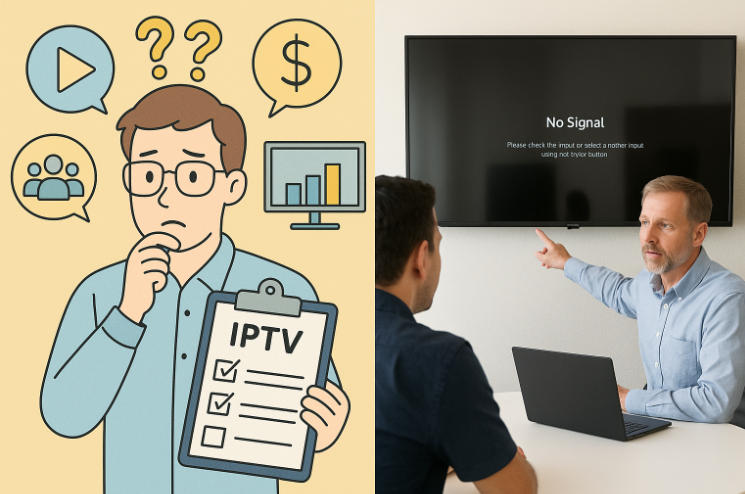What is IPTV? If you've ever streamed live sports on your smart TV or binged a show without a cable box in sight, you've already brushed up against it. IPTV—short for Internet Protocol Television—is how TV moves through the internet instead of old-school satellite or cable. It’s changing how content is sold, streamed, and shared, and in 2025, it's where the money is.
Think of IPTV like food delivery. Cable is the sit-down restaurant—slow, expensive, fixed menu. IPTV? It’s Uber Eats for your TV. Flexible, on-demand, and tailored to what your customers actually want. For wholesalers or resellers, that means serious opportunity.
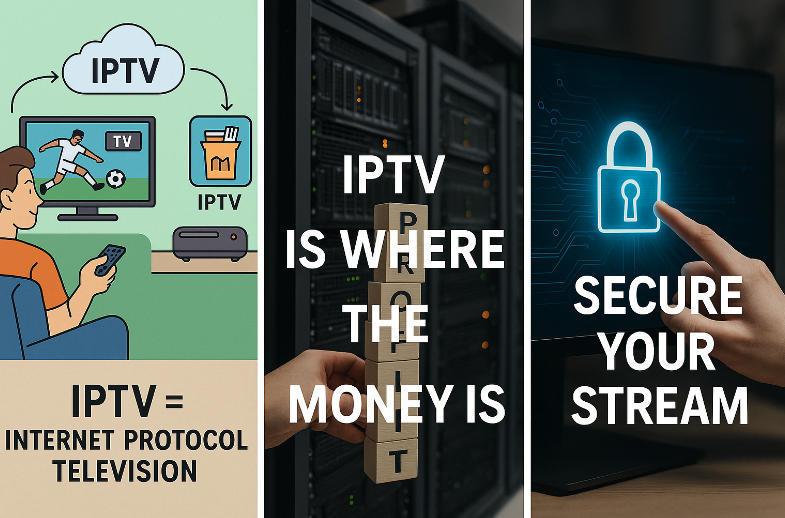
“I’ve watched companies triple their margins in under a year just by switching to IPTV infrastructure,” says Mike Rowan, Senior Network Architect at Star IPTV. “But only if they secure it and price it smart.”
In this guide, we’ll break down the backbone of IPTV systems, show you how to protect your stream from freeloaders, and help you pick the business model that actually pays. Oh—and we’ll cover the legal gray zones so you don’t get burned.
If you're looking to make IPTV your next big move, this isn’t fluff. This is your playbook. For further details, check out our What is IPTV FAQ page.
What IPTV Is Made Of: Infrastructure Components
This section walks you through the real bones of IPTV—hardware, networks, and servers that actually make the whole thing run.
Set-Top Boxes and Customer Premises Equipment
In IPTV, the “box” isn’t just a box—it’s the lifeline between the viewer and their shows.
A Set-Top Box (STB) is what turns the IPTV signal into watchable television. It's the decoder that makes it all happen.
Customer Premises Equipment (CPE) also includes routers, modems, and Wi-Fi extenders—basically, whatever sits in the user’s home and handles the connection.
Some STBs now support 4K video, voice control, and even multi-screen viewing, giving them a smart edge.
IPTV receivers today often come bundled with remote controls that support apps, search, and voice—blurring the line between TV and tablet.
The smarter your CPE, the better your customer satisfaction scores. Simple as that.
For more on devices and compatibility, see our Best IPTV Buying Guide 2025: Devices, Features, Regions.
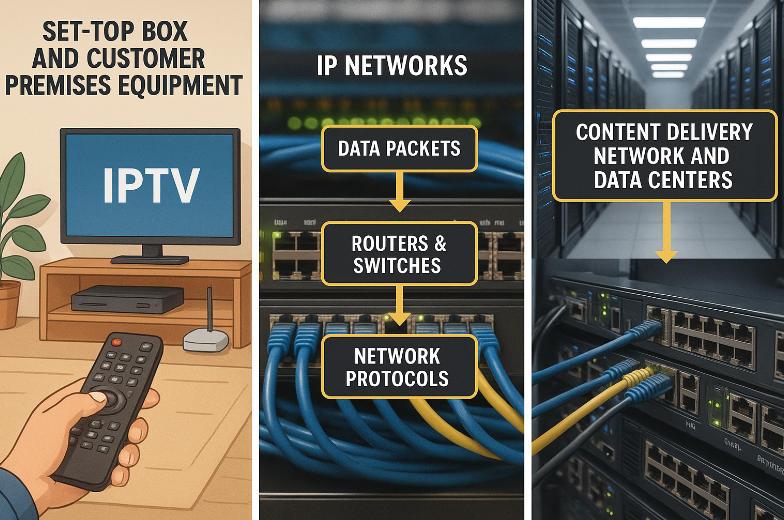
How IP Networks Deliver Streaming Media
The magic of streaming boils down to how smartly data moves. And IP networks are the delivery drivers.
| Component | Role in Streaming | Common Tech Used | Performance Impact |
|---|---|---|---|
| Data Packets | Carry small chunks of content | UDP, TCP | Affects speed & quality |
| Routers & Switches | Route traffic through network paths | Layer 3/Layer 2 | Impacts latency |
| Network Protocols | Manage how data is sent and received | RTP, IGMP, HTTP | Controls flow, reliability |
| Bandwidth Allocation | Controls how much data can move at once | QoS, throttling | Impacts buffering and lag |
Streaming media relies on the efficiency of Internet Protocol to break video into tiny pieces called packets.
These packets hop between routers and switches, riding your home internet like a digital freeway.
When bandwidth is tight, the stream suffers—so IPTV providers have to play it smart with dynamic allocation.
As TechRadar explains, IPTV stream quality is directly tied to provider infrastructure and user bandwidth.
Inside the Content Delivery Network (CDN)
No matter how great your stream is, distance kills speed. That’s where the CDN steps in.
A Content Delivery Network (CDN) is a system of servers placed all over the globe that store and deliver IPTV content close to where the viewer is located.
These servers handle caching, which means frequently viewed shows and streams are saved temporarily for faster access.
Bandwidth optimization through a CDN reduces latency—so no more annoying buffering just as the big goal’s about to happen.
“The closer your CDN node is to your customer, the happier your support team will be.” — Chloe Han, Senior Engineer, Star IPTV Infrastructure Division.
For more about how Star IPTV uses CDN for performance, see our IPTV streaming technology guide.
Managing Load with Edge Servers and Data Centers
Think of edge servers and data centers as the bouncers and bartenders at the club of IPTV. They keep things moving and stop the place from overflowing.
Edge servers handle requests right near the user’s location, keeping things snappy.
These servers reduce network traffic back to the main data centers, keeping overall bandwidth in check.
At the core, data centers house massive server infrastructure responsible for content storage, archiving, and retrieval.
Together, they support redundancy and scalability, so the stream holds up—whether 10 or 10 million people are watching.
Load balancing is what distributes content requests evenly so no single server goes up in flames during a live sports event.
When it all runs well, nobody notices. When it breaks? Everybody notices. That’s why these systems matter.
4 Methods to Secure Your IPTV Stream
Your IPTV stream is only as strong as its weakest protection. This cluster breaks down how to keep your content locked down, your users safe, and your network secure.
Encryption and Data Privacy in IPTV Streaming
Encryption and data privacy aren't just technical checkboxes—they're your frontline defense. With more users streaming across IP networks, securing their sessions is non-negotiable.
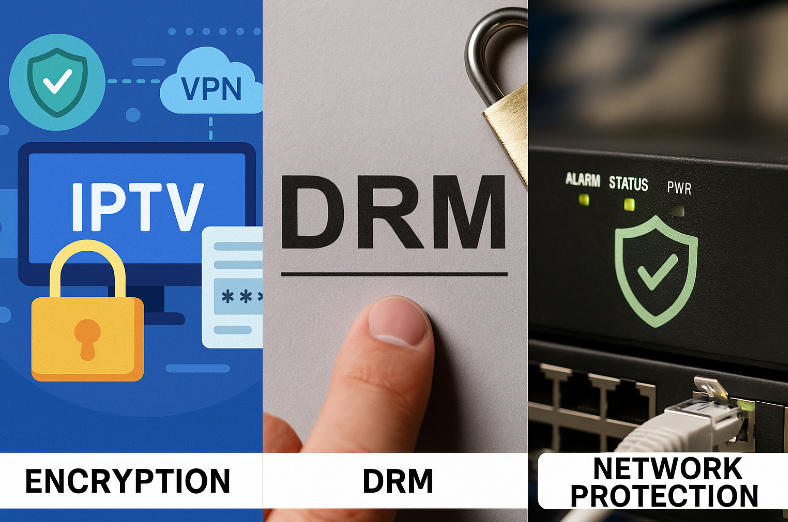
Here’s what matters:
AES Encryption Is the Gold Standard: Most IPTV platforms now use AES-128 or AES-256 to encrypt streams in real time.
TLS/SSL Secures the Connection: Think of it like a secure tunnel between your content server and the user’s device.
VPNs Can Be Double-Edged: While VPNs are great for user privacy, they can complicate licensing compliance in restricted regions.
User Data Must Be Protected: Names, IPs, device IDs—it’s all sensitive and must be encrypted at rest and in transit.
Failing to secure user data isn't just risky—it can land you in legal trouble.
💬 Quote
“Encryption should not be an afterthought. It must be embedded into the IPTV architecture from the start,” says Alicia Ng, Security Lead at Star IPTV Engineering, in a 2024 internal whitepaper.
Star IPTV complies with ISO/IEC 27001 and GDPR for security (see certifications).
DRM and Content Rights Enforcement
If you don’t control who watches what, someone else will. DRM helps enforce content rights so your licensed programs stay protected.
Key Dimensions of Control:
DRM Technology: Widevine, FairPlay, and PlayReady are the industry go-tos for stream control and key rotation.
License Management Systems: These systems track user entitlements in real time, blocking unauthorized access.
Watermarking: Invisible watermarks tied to user IDs can help track leaks, especially in pay-per-view events like sports.
Access Control Layers: Block unauthorized devices, IPs, and accounts dynamically.
Piracy Prevention: Actively monitor IPTV streams for redistribution using fingerprinting or forensic analysis.
Legal Compliance: Enforcing rights helps retain deals with content studios and regulators.
When DRM is tight, content providers trust you more—and pirates stay away. TroyPoint also highlights DRM as a major factor in IPTV service credibility (troypoint.com).
Telecommunications Regulations and Network Protection
The big carriers aren't the only ones who have to follow the rules. IPTV providers are subject to the same telecom laws and must defend their networks like pros.
Here’s what you need to cover:
Understand Local Telecommunications Regulations
Don’t assume a license in one region works in another. Rules differ for IPTV distribution across borders.Firewalls Are Non-Negotiable
Always-on firewalls protect against traffic anomalies, protocol misuse, and unauthorized admin access.Intrusion Detection Systems (IDS)
Use IDS to spot signs of attacks—like failed login bursts or strange data exfiltration.DDoS Mitigation Must Be Real-Time
DDoS attacks can cripple IPTV streams during peak viewership. A cloud-based solution like Cloudflare or Akamai is often essential.Data Security Policies
You should define and enforce strict data retention, sharing, and deletion policies. Regulators care, and users notice.
Cutting corners on network protection? That’s how businesses get blacklisted.
Freemium vs. Premium IPTV Subscription Models
This chapter breaks down how IPTV providers make money—whether it’s subscriptions, bundled deals, or per-event charging.
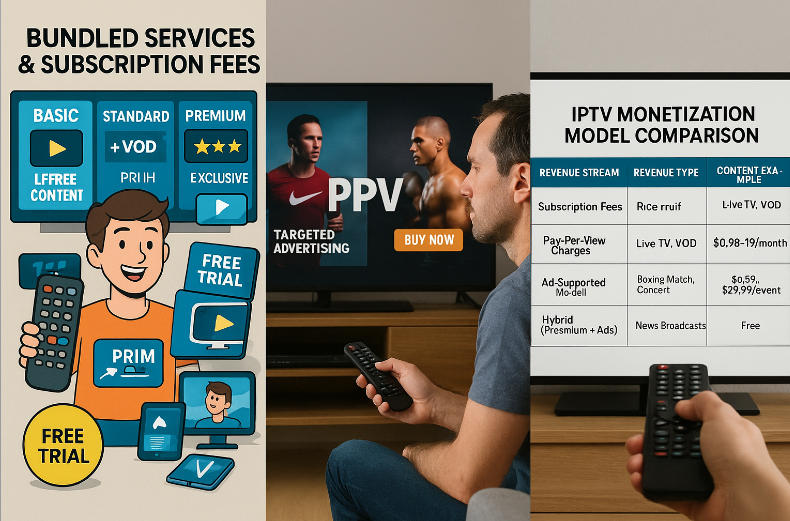
Bundled Services and Subscription Fees
Getting paid through subscriptions is the bread and butter for most IPTV platforms—but there’s more than one way to slice it.
Bundled Services Build Loyalty:
When users get live channels, VOD libraries, and a couple of premium content options in one neat package, it feels like a win. It reduces churn and boosts customer stickiness. IPTV platforms often bundle local news, sports, and music videos together.Pricing Tiers That Work:
Subscription fees aren’t one-size-fits-all. Platforms typically roll out:Basic Plans — Limited access, few channels
Standard — Popular channels + VOD
Premium — Full access, ad-free, exclusive content
Free Trials & Entry Offers:
Want to boost conversion? Offer a 7-day or 1-month trial. It’s a low-risk way for users to experience personalized content and interactive services.Multi-Screen Access Increases Value:
Families love watching on different screens. If the IPTV bundle allows multi-device streaming, it instantly feels more valuable—justifies a higher subscription fee.
In short, smart packaging drives signups—and smarter pricing keeps users paying. Try our Star IPTV Subscription Plans & Free Trial to see how this model works in practice.
Advertising Revenue or Pay-Per-View Charges
There’s money outside subscriptions, and IPTV platforms are cashing in.
🔑 Multi-dimensional Revenue Touchpoints:
1. Ad Insertion Brings Passive Profit
IPTV platforms insert pre-roll, mid-roll, or banner ads into live TV and on-demand streams. The trick? Making it subtle enough not to annoy viewers, but valuable enough for advertisers to pay up.
2. Targeted Advertising = Higher CPMs
Because IPTV systems know user preferences and viewing patterns, they can sell ultra-targeted ad slots. Think: sports fans seeing Nike ads, K-drama lovers getting beauty product promos.
3. PPV Keeps It Eventful
For sports events or blockbuster movies, Pay-Per-View is gold. Fans are happy to drop $10–$30 for exclusive access if the quality is solid.
IPTV Monetization Model Comparison Table
| Revenue Stream | Revenue Type | Content Example | Typical Cost to User |
|---|---|---|---|
| Subscription Fees | Recurring (monthly) | Live TV, VOD | $9.99–$19.99/month |
| Pay-Per-View Charges | Transactional | Boxing Match, Concert | $4.99–$39.99/event |
| Ad-Supported Model | Passive/Indirect | News Broadcasts | Free or Freemium |
| Hybrid (Freemium + Ads) | Mixed Model | Basic with ads, upgrade to remove | $0–$9.99/month |
You don’t have to pick one. Many IPTV providers combine PPV events, subscription fees, and targeted advertising to maximize reach and revenue. Just make sure your tech stack can handle it.
As Evoca.tv points out, hybrid models are becoming the standard among legal IPTV providers.
Where Is IPTV Accessible Legally? What You Should Know
IPTV providers looking to expand globally or resell services often hit legal roadblocks tied to territory, licensing, and internet regulation. Here’s how to keep things squeaky clean and market-ready.
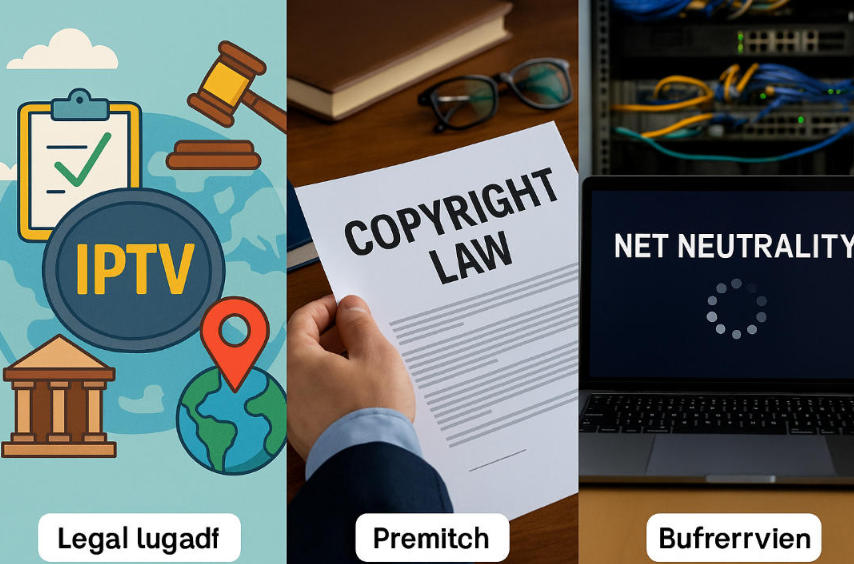
Broadcasting Licenses and Geographic Restrictions
Broadcasting licenses are like permission slips — no license, no show. Geographic restrictions are the invisible fences around your content library.
Broadcasting licenses are issued by regulatory bodies and define where and how IPTV content can be distributed legally.
Geographic restrictions limit playback based on user location, enforced via IP filtering and VPN detection.
IPTV providers must identify target service areas and acquire region-specific licenses.
Some countries require licenses for each content type: Live TV, VOD, or Pay Per View.
Without proper coverage, you risk takedowns, fines, or even criminal penalties.
Use automated compliance tools to track regional license validity and service area boundaries.
Bonus tip: Run a license audit before entering any new market — don’t wing it.
For compliance guidance, visit our IPTV setup guide.
Copyright Laws in International IPTV Markets
When it comes to international copyright, it’s less “one-size-fits-all” and more “a wild mix of rules.” One mistake? You’re toast.
Understand what counts as protected IPTV content: everything from movies to music videos is fair game for lawsuits if pirated.
Digital rights management (DRM) is your friend — implement systems that block downloads and screen recording.
Different international markets have different enforcement levels: the U.S., EU, and Japan are hawkish, while others are lenient.
Piracy protection isn’t optional; many large streaming hubs require proof of legal frameworks.
A quote from Yasmin Ortega, Legal Director at Star IPTV:
“Global IPTV players need to treat copyright like a passport — without it, you’re not getting in.” (Source: Global Media Law Conference Report, 2023)
External verification: SuccessKnocks stresses the varying copyright enforcement in IPTV across regions.
Navigating Net Neutrality and Licensing Barriers
Net neutrality sounds fair — all traffic treated equally. But if your IPTV stream keeps buffering while YouTube runs smooth? That’s not an accident.
| ISP Region | Market Access Difficulty | Regulatory Pressure | Common Licensing Barriers |
|---|---|---|---|
| EU | Moderate | High | Content origin checks |
| USA | Easy | Medium | Carrier prioritization |
| India | High | High | Language-based licensing |
IPTV services must negotiate with internet service providers in countries with weakened net neutrality — or risk being throttled.
Licensing barriers often favor local providers, especially in competitive or protected markets.
In places like China or India, regulatory policies demand customized content filtering and language compliance.
Market access isn’t just about content — it’s about who you partner with, how you structure your license agreements, and meeting regional tech specs.
Conclusion
There’s no way around it—streaming TV has come a long way from rabbit ears and cable boxes. Today, understanding what is IPTV isn’t just tech-speak—it’s knowing how everyday folks are getting their entertainment faster, cheaper, and on their own terms. If you’re in the game to deliver content at scale, IPTV is your ticket.
Before diving headfirst into this space, keep these key things in mind:
Nail down your licensing—content rights are a big deal
Make sure your infrastructure can handle peak traffic
Think beyond monthly fees—ads and PPV still print money
Protect your streams like your wallet depends on it (because it does)
As Reed Hastings once said, "The goal is to become HBO faster than HBO can become us." Smart IPTV players will know how to play both sides—content and tech.
No need to overthink it. IPTV is already here, changing the rules. It’s your move.
👉 Ready to test IPTV risk-free? Start your free trial with Star IPTV today.
What is IPTV and how does it work with streaming media?
IPTV stands for Internet Protocol Television
It delivers shows and videos through internet networks
You can watch live TV, on-demand content, or rewind past shows
The stream is sent to your screen via smart devices or set-top boxes
It works by turning video into data, then back into video on your device
How does bandwidth affect IPTV quality?
If your network can’t handle the traffic, you’ll get lag, blurry images, or buffering. Good bandwidth keeps the stream smooth, especially for HD channels or fast-moving sports.
What are the legal limits of IPTV in different countries?
You need permission to show certain shows and movies
Some content can’t be shown in certain regions
Governments may block access based on location
Laws about sharing or reselling content are strict
Providers risk being shut down or fined if they ignore these rules
Which IPTV model makes more money—freemium or premium?
Premium models bring steady income through monthly plans or pay-per-view. Freemium grows faster and earns through ads. Some companies use both to keep users and boost profit.
What is IPTV infrastructure made of?
Systems to receive and organize the content
Servers to store and deliver it
Networks that send video to users quickly
Boxes or apps on your device to watch it
Local servers to keep things fast and stable
Can IPTV be used for learning or business training?
Yes, schools and companies use IPTV to stream lessons, meetings, or training videos. It’s a flexible way to reach people, with tools like private channels or playback control.
How can IPTV streams be protected from theft or hacking?
Use tools that block copying or sharing
Lock the streams with encryption
Only allow access in approved areas
Track who’s watching and spot strange activity
Add security to the network to keep it safe
What does a set-top box do in IPTV?
It connects your TV to the IPTV service. It takes the internet signal and turns it into video, so you can watch live shows, pause content, or switch channels easily.
What IPTV content is most popular right now?
Live TV for news and sports
On-demand movies and TV shows
Educational content for schools or training
Music videos and entertainment clips
Pay-per-view events like concerts or fights
How is IPTV different from apps like Netflix or YouTube?
IPTV usually comes from your internet provider and runs on a closed network. Apps like Netflix use public internet. IPTV gives more control and fewer delays when done right.
